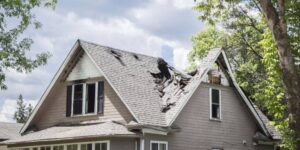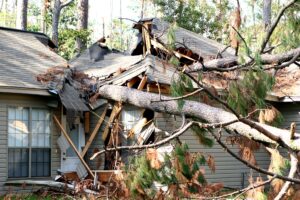After the Storm: A Step-by-Step Guide for Timely Storm Damage Repair
Storms can leave behind a trail of destruction, from fallen trees and power lines to damaged roofs and flooded homes. The aftermath can feel overwhelming, but taking prompt and strategic action can help prevent further issues and restore your property efficiently. Understanding the necessary steps for Roof storm damage repair will make the process smoother and ensure a safe recovery.
Assessing the Damage
 Once the storm has passed and it is safe to step outside, the first step is to evaluate the extent of the damage. Checking for hazards such as downed power lines, broken glass, and unstable structures is essential before beginning any cleanup. The roof, siding, windows, and foundation should be carefully inspected for visible signs of damage. Interior spaces should also be checked for leaks, water intrusion, and structural weakening. Even minor damage can lead to more significant problems if left unaddressed.
Once the storm has passed and it is safe to step outside, the first step is to evaluate the extent of the damage. Checking for hazards such as downed power lines, broken glass, and unstable structures is essential before beginning any cleanup. The roof, siding, windows, and foundation should be carefully inspected for visible signs of damage. Interior spaces should also be checked for leaks, water intrusion, and structural weakening. Even minor damage can lead to more significant problems if left unaddressed.
Documenting and Reporting the Damage
Thorough documentation is critical when dealing with insurance claims. Taking photographs and videos of all affected areas will serve as evidence when filing a report. Listing all damaged items and noting their condition will help in the assessment process. Contacting the insurance company as soon as possible ensures that the claim is processed without delays. Understanding the coverage and the steps required by the insurer will help in securing fair compensation.
Preventing Further Damage
While waiting for professional repairs, temporary measures should be taken to prevent additional damage. Covering broken windows and holes in the roof with tarps or boards will help keep water and debris from entering the home. Removing standing water and drying out wet areas will minimize the risk of mold growth. If safe to do so, clearing debris that could cause further harm to the property will aid in reducing long-term repair costs.
Hiring Professional Contractors
Storm damage repairs often require professional expertise, particularly for roofing, electrical, and structural repairs. Hiring reputable and licensed contractors ensures the work is done safely and efficiently. Researching reviews, verifying credentials, and obtaining multiple estimates will help in choosing the right service providers. Scams and fraudulent repair companies often emerge after storms, so verifying legitimacy before committing to any agreements is necessary.
Addressing Water and Mold Damage
Water intrusion is one of the most significant concerns after a storm, as prolonged exposure can weaken structures and create an ideal environment for mold growth. Extracting water and using dehumidifiers will aid in drying out affected areas. If mold has already developed, professional remediation may be required to prevent health risks. Ensuring proper ventilation and treating materials with antimicrobial solutions can help in reducing the chance of further issues.
Restoring the Property
 Once immediate repairs and mitigation efforts have been completed, restoring the property to its pre-storm condition is the next step. Replacing damaged roofing, siding, and insulation will help in strengthening the home against future storms. Repainting, refinishing floors, and repairing landscaping will contribute to the overall restoration. The process may take time, but careful planning and prioritization will lead to a fully recovered home.
Once immediate repairs and mitigation efforts have been completed, restoring the property to its pre-storm condition is the next step. Replacing damaged roofing, siding, and insulation will help in strengthening the home against future storms. Repainting, refinishing floors, and repairing landscaping will contribute to the overall restoration. The process may take time, but careful planning and prioritization will lead to a fully recovered home.
Strengthening the Home for Future Storms
After experiencing storm damage, taking preventive measures can minimize the risk of severe damage in the future. Reinforcing the roof, securing loose outdoor items, and installing storm-resistant windows can enhance the home’s ability to withstand extreme weather. Keeping gutters clean and ensuring proper drainage will help in preventing water accumulation around the foundation. Developing an emergency preparedness plan will also contribute to a safer response when another storm approaches.
